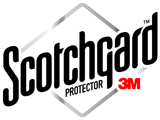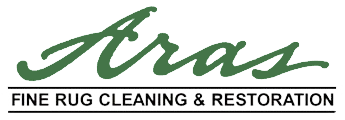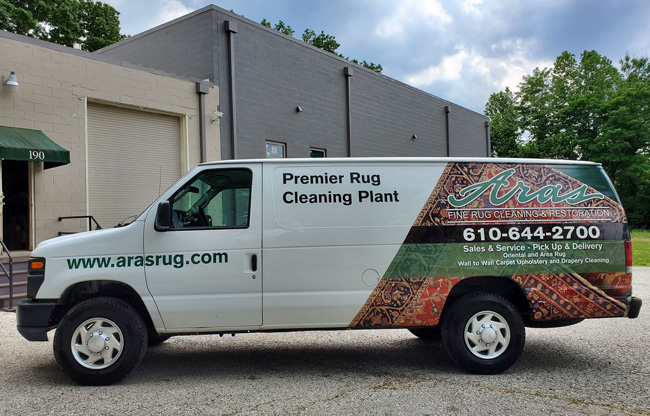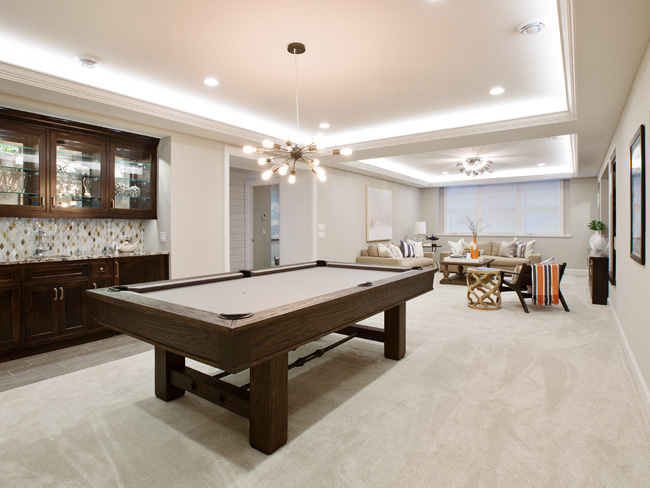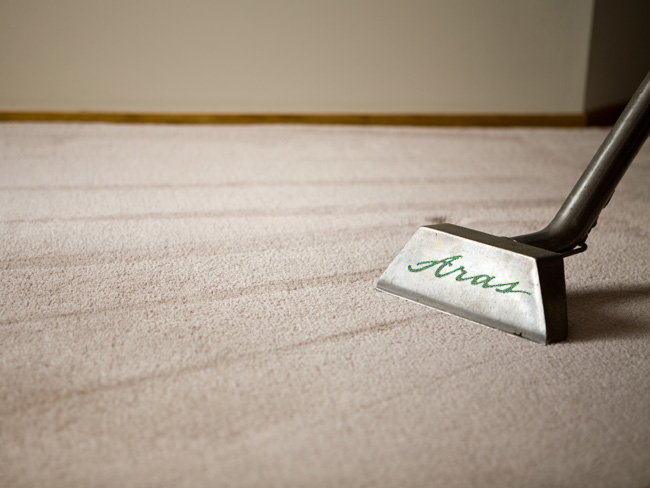Wall To Wall Carpet Cleaning
Really clean, really fresh!
Wool or synthetic, woven or tufted, our experienced cleaning technicians know how to restore your carpet’s appearance – and provide you a healthier indoor environment. You’ll like our attention to detail and find our service easy and convenient.
Aras Rug & Carpet Cleaning has the expertise and experience to clean today’s unique fibers safely. Our methods involve high velocity vacuum systems which open the fibers allowing the release of soil and the restoration of matted areas. We then use a unique self-neutralizing method of steam-extraction that penetrates deeply, lifting soil directly to our trucks. This method leaves fibers residue free to reduce future soiling. We specially treat high-traffic, heavily soiled areas and spots Our formulations are gentle, safe and through. In addition we offer a number of soil and stain resistant treatments that will protect your carpets and furniture keeping them cleaner longer.
Aras Rug Company uses the Butler System to clean your carpet and upholstery. The Butler System is the #1 van-powered cleaning system.
We also offer Microban Anti-microbial treatment as well as Ultimate Fabric Protector, Kleen-Guard SB
"If you are in need of wall to wall rug cleaning this is the business for you! The office staff is pleasant. My appointment was scheduled in short time. The guys who cleaned my rugs were so courteous. They did a great job!" - Pat G.
- Google Review
"We have been using Aras Fine Rug & Restoration for over 10 years. They have always been prompt, courteous and extremely professional. They have cleaned for us wall-to-wall carpet, many area rugs, upholstery, and drapery. " - Judy C.
- Google Review
Keep your carpet cleaner looking longer with the re-application of Scotchgard stain protectant. Experience easier, faster removal of soil, stains and liquid spills … preventing permanent stains.
The stain protectant bonds with the carpet fiber to form an “invisible barrier” against water and oil-based stains, making your carpet more soil retardant and stain resistant. Enjoy the long-lasting protection of soil resistance and spill repellency.
BEFORE CLEANING
- Point out specific carpet conditions or soil/stain concerns to our cleaning technician.
- Secure your small breakables away from the carpeted areas to be cleaned.
AFTER CLEANING
- A freshly cleaned carpet is typically dry within 6 – 24 hours. You can accelerate the drying time by providing ventilation and maintaining your interior temperature at 65˚– 75˚.
- Limit foot (and pet) traffic on your cleaned carpet until it is completely dry.
- Please refrain from removing the protective moisture shields (blocks & tabs) until your carpet is completely dry.
- Refrain from repositioning unprotected furnishings onto your freshly cleaned carpet until it is completely dry.
- Take care walking from your carpet onto a hard surface floor… it may be slippery.
- To receive the full benefit of the re-application of stain protectant following cleaning, please allow 24-hours of cure time prior to resuming full use of your carpet.
Carpet represents a substantial investment in the scheme of interior furnishings. With proper and regular care, you can add years of life to your carpet and help retain its original beauty. The best advice for retaining that like-new appearance is not to allow the carpet to become too badly soiled. Once that happens, stronger cleaning reagents and harsher mechanical action are required to recapture an acceptable appearance level.
The key to keeping your carpet looking great centers around three basic steps:
- Vacuum thoroughly and frequently.
- Prompt, correct removal of spots and spills.
- Periodic overall cleaning.
Vacuuming
Your vacuum cleaner is probably your best weapon in keeping your carpet free from soil. Vacuum regularly to keep soil from becoming embedded in the carpet’s pile, where it is more difficult to remove and where it can even cause fiber damage, and dull the carpet’s beauty. For best results, use a vacuum cleaner with a beater bar and good suction for dry soil removal, and equipped with an effective high filtration bag.
Thoroughly vacuum the light traffic areas at least weekly, and even daily in the heavily used areas. Vacuum slowly, with a number of passes, to allow the beating and extraction action to remove embedded particulate soil. Consider the use of walk-off mats at entry areas to reduce the amount of soil entering the interior spaces.
Spot Removal
Accidents will occur, but prompt first-aid is vital to preventing permanent damage. A wet/dry vacuum will help greatly in removing spots and stains. Use cleaning solutions sparingly and blot … don’t rub. A weighted pad of color-fast towels or tissue, placed over the wet area, will absorb additional moisture and the staining substance.
Be mindful not to leave residual detergent in the carpet, as it will attract soil causing the spot to “reappear”. Unfortunately, not all spots and stains can be completely and safely removed.
Overall Cleaning
How often your carpet will need an overall cleaning depends on foot traffic, soiling conditions, type and color of the carpet. Generally, an overall cleaning is appropriate when your carpet seems to have lost its luster, or the traffic areas are showing soil.
Should you choose to do-it-yourself, select the cleaning method and equipment carefully. Follow the instructions and avoid high pH cleaning solutions and excessive abrasive action. If cleaning a stain resistant yarn system, first do a general cleaning and then, if necessary, spot clean with approved cleaning reagents. Do not apply any cationic (anti-static/anti-microbial) chemical treatments to stain resistant yarn systems.
A professional carpet cleaner will select the best method of cleaning to keep your carpet newer looking longer, and in less frequent need of overall cleaning. Always insist that he/she be experienced, well equipped and properly trained. Having the best in equipment is not enough … it’s the cleaning technician behind the equipment that really makes the difference.
So remember … regular vacuuming and prompt spot removal will postpone the need for more expensive, overall cleaning to restore your carpet’s color and texture.
Planned carpet maintenance is designed to:
- Provide less expensive preventive cleanings rather than infrequent, less effective restorative cleanings.
- Maintain a more uniform level of original color and texture because soil and stains are not allowed to accumulate between infrequent cleanings.
- Extend the life of the carpet by reducing acid exposure and damaging fiber abrasion caused by soil.
How a carpet performs after it has been installed depends upon many things … carpet construction, yarn system, the type of installation, the quality of the maintenance and the type of fiber that has been used. Each of the fibers used to produce carpets has distinct characteristics and performance properties that do not change.
Nylon
Nylon is the most important fiber used in the carpet industry today. Bulked continuous filament (BCF) and staple nylon represent approximately 63% of the carpet market. Nylon is the easiest fiber to dye and, as a result, the consumer has available an impressive choice of colors. In addition, this fiber is thermoplastic which means that it can be deeply heat-set, giving the carpet manufacturer the ability to produce cut-pile carpet such as saxonies and friezes that perform as well as loop-pile carpets.
Nylon is the fiber most resistance to abrasion. There is possibility that a nylon carpet will “ugly” out, if not properly maintained, but nylon will not wear out. Nylon is also a very resilient fiber, reducing matting and crushing in traffic areas. In the area of soiling and cleaning, nylon performs very well, but unless it is treated for stain removal with one of the stain-blocking products, this fiber can be permanently stained very easily by common household spills.
Nylon 6 and 6.6
There are two types of commonly used nylon carpet fiber that have slightly different properties. Nylon type 6.6 is the “harder” of the two fibers, making it more stain resistant. Type 6 is a softer, more porous nylon fiber allowing more rapid penetration of dye in the manufacturing process which enables a variety of colors and patterns to be easily applied. Because of these characteristics, type 6 nylon will accept staining agents more readily and show the effects of light fading and traffic soiling more quickly than type 6.6.
Polypropylene (Olefin)
The use of polypropylene in the carpet industry has increased rapidly. This is primarily because of polypropylene’s lower cost and the ease in which almost all common household stains can be removed from a polypropylene fiber. In the USA, polypropylene is only readily available in solution dyed form. This means that the carpet will resist color fading, but the consumer will not have the choice of colors that are available with nylon fibers
Polypropylene is not a thermoplastic fiber and its most undesirable characteristic is its lack of resilience, limiting the ability of saxony and frieze styles to remain heat-set as well as nylon. Although the carpet construction can be made so dense that crushing is resisted, once a polypropylene carpet becomes crushed, it stays crushed.
Polypropylene has an affinity for oil-based soils, creating the need for more aggressive cleaning procedures to restore the appearance of heavily soiled polypropylene carpet. Some solution dyed fibers do initially soil a little more rapidly than fibers that are dyed after they are tufted because of residual oils left in the tufted process.
Polyester
Polyester is dyed at the carpet mill in a manner very similar to nylon. Like nylon, this fiber is a true thermoplastic fiber, and so it will perform well in heat-set carpet styles. Although not as resilient as nylon, polyester does perform better in this area than polypropylene. In the area of spot removal, polyester is better than a stainblocked nylon but not as good as polypropylene.
Wool
Wool fibers have performed in carpets over a longer period of history than any other fiber. Although wool does not have the resistance to abrasion that is available in the man-made fibers, it does have an excellent balance of all the other important properties. Resilience is excellent, soil hiding is excellent, and cleaning and stain removal characteristics are very good.
Polytrimethylene Terephthalate (PTT)
Preliminary tests show that PTT has characteristics that make it suitable for carpet. In addition to good resilience, PTT also has great stain resistance to common household spills without a stain-block treatment. The cleanability features of this fiber are very good. Expect to see this product on the market.



